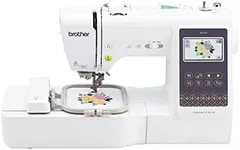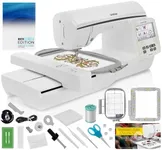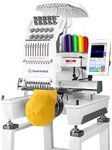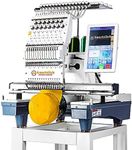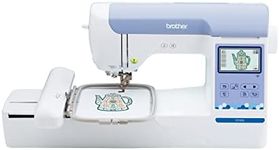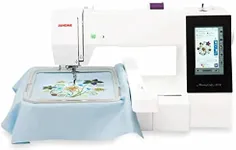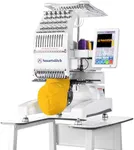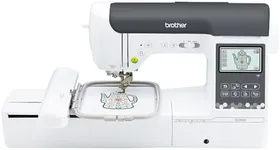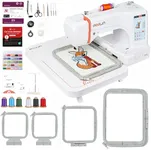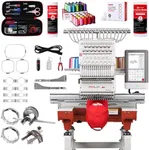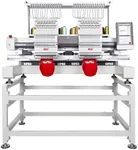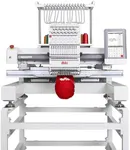Buying Guide for the Best At Home Embroidery Machines
Choosing the right at-home embroidery machine can be a rewarding experience, allowing you to create beautiful designs and personalize items with ease. To find the best fit for your needs, it's important to understand the key specifications and features that differentiate various models. By considering these factors, you can make an informed decision and select a machine that will meet your embroidery goals and preferences.Embroidery AreaThe embroidery area refers to the maximum size of the design that the machine can stitch without needing to re-hoop the fabric. This is important because it determines the scale of projects you can undertake. Smaller embroidery areas, typically around 4x4 inches, are suitable for beginners and small projects like monograms and patches. Medium areas, around 5x7 inches, offer more flexibility for larger designs and more complex projects. Larger areas, 6x10 inches or more, are ideal for advanced users who want to create large, intricate designs without interruption. Consider the types of projects you plan to work on to determine the appropriate embroidery area for your needs.
Built-in Designs and FontsBuilt-in designs and fonts are pre-loaded patterns and text styles that come with the embroidery machine. These are important because they provide a starting point for your projects and can save you time. Machines with a larger number of built-in designs and fonts offer more variety and creative options. If you are a beginner, a machine with a good selection of built-in designs can help you get started quickly. For more advanced users, the ability to import additional designs via USB or other means may be more important, allowing for greater customization and creativity.
Connectivity OptionsConnectivity options refer to how the embroidery machine can connect to other devices or sources to import designs. This is important for expanding your design library and accessing new patterns. Basic machines may only have built-in designs, while more advanced models offer USB ports, Wi-Fi, or direct computer connections. USB ports allow you to transfer designs from your computer to the machine easily. Wi-Fi-enabled machines can connect to the internet to download designs directly. If you plan to use a wide variety of designs or create custom patterns, look for a machine with robust connectivity options.
Stitching SpeedStitching speed is measured in stitches per minute (SPM) and indicates how quickly the machine can complete a design. This is important for efficiency, especially if you plan to work on large or multiple projects. Lower-end machines may have speeds around 400-600 SPM, which is sufficient for small projects and beginners. Mid-range machines typically offer speeds of 700-800 SPM, providing a good balance of speed and control. High-end machines can reach speeds of 1000 SPM or more, ideal for experienced users who need to complete projects quickly. Consider your patience level and the volume of work you plan to do when choosing the right stitching speed.
Ease of UseEase of use encompasses features that make the embroidery machine user-friendly and straightforward to operate. This is important for ensuring a smooth and enjoyable embroidery experience. Key features to look for include an intuitive touchscreen interface, automatic needle threading, thread sensors, and easy-to-follow instructions. Beginners should prioritize machines with comprehensive tutorials and user-friendly controls. More experienced users might look for advanced features that streamline the embroidery process, such as automatic thread cutting and advanced editing capabilities. Assess your comfort level with technology and your willingness to learn new features when considering ease of use.
Hoop Sizes and TypesHoop sizes and types refer to the different frames that hold the fabric in place while the machine stitches the design. This is important because it affects the versatility and scope of your projects. Basic machines may come with a single hoop size, limiting the range of designs you can create. More advanced machines offer multiple hoop sizes and types, allowing for greater flexibility. Some machines also support specialty hoops for specific tasks like quilting or embroidering on caps. Consider the variety of projects you plan to undertake and choose a machine that offers the appropriate hoop sizes and types to match your creative ambitions.
